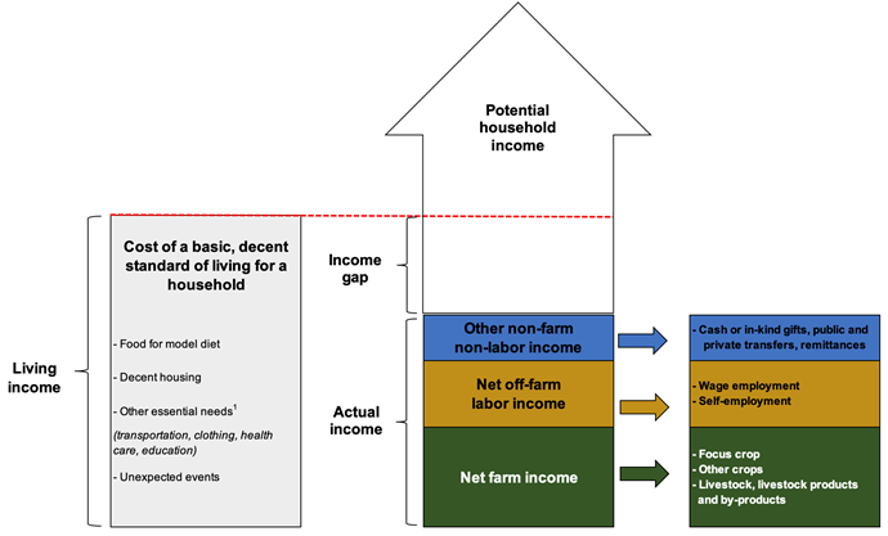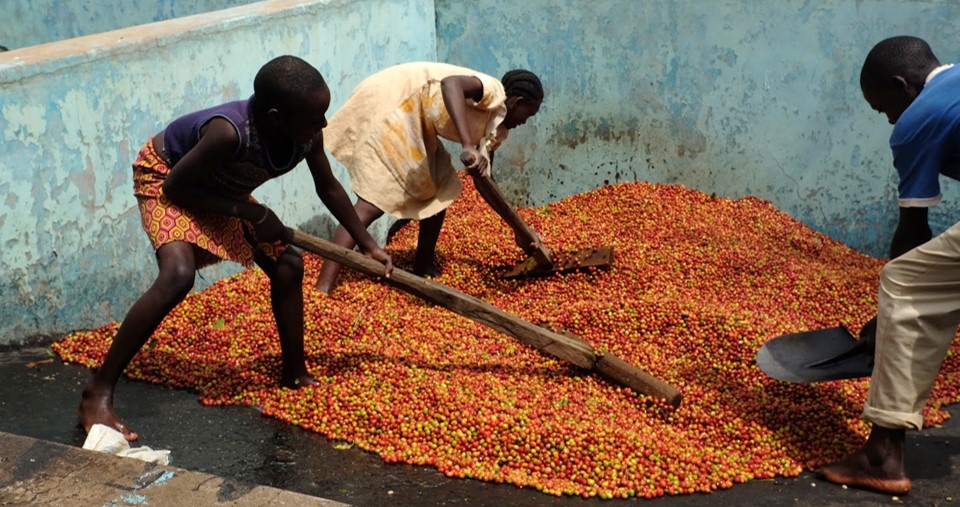A recent COSA study for ISEAL Alliance in rural Kenya found that women farmers earned 50% below the national poverty line. When calculated against a Living Income benchmark, a staggering 80% of them are not earning a decent level of living.
Reflecting the record-levels of income disparities in most regions, we are starting to see a shift in thinking among development institutions and businesses about supply chains. Beyond considering poverty lines, there is interest in how to close the gap between actual income and a Living Income benchmark. We are getting closer to a simple and scalable approach for calculating that gap, with contextually appropriate Living Income benchmarks and a replicable measure of actual income for any location.
The measure of Living Income is similar to a poverty assessment but goes further taking into account the notion of decency. The Living Income Community of Practice LICOP, led by ISEAL Alliance, Sustainable Food Lab, and GiZ, started with seminal research on living wage by Richard and Martha Anker, to create a crop-oriented benchmark for Living Income in several countries.
Calculations around Living Income can be somewhat complex and that is currently understandable. As they are made more readily adaptable to distinct contexts, they are more likely to scale globally. We believe that a key to this is to balance rigor and practicality, reducing costly investment in complex recalculations that require a lot of data, information, and assumptions so that LI can be more widely understood and adopted.
Using basic economics and available data, we can extrapolate the idea of a decent cost of living from one place to another, essentially looking at consumption bundles, using national household surveys and national price indexes to update for differences between regions. We may lose some precision, and we must be careful with that, but we gain a lot in the possibility of scaling and creating more benchmarks in more places.
Another key matter is addressing what the actual farmer income is, as it comes from a myriad of sources. COSA and KIT, the Royal Tropical Institute, have developed guidance protocol for how to measure and calculate actual incomes for smallholder households in agricultural contexts.

Source: adapted from https://www.living-income.com/measurement-actual-income
Carlos de los Rios, senior research coordinator at COSA who developed the income guidelines with KIT, says we can continue improving to make this assessment more generalizable. “If we get creative, and simplify carefully, then we can better scale,” he says. That could mean generating an approach that can be widely applied like the PPI – Poverty Probability Index – and similarly adapting the Living Income benchmark. He notes that there are many reasons for farmers to move out of farming, especially when coffee or cocoa prices are low. That is less likely when they earn enough for a decent life. “Farming is becoming an activity of elders, not the young. If we manage to find interesting solutions for various locations, I think we can contribute significantly to improve the weakest link of the supply chain and improve the sustainability of the cocoa and coffee industry and other crops.”
The implications of closing the gap are great and beg the question of what are the actions that businesses, in particular, can take to try to close that gap. That is the next discussion.







Leave A Comment